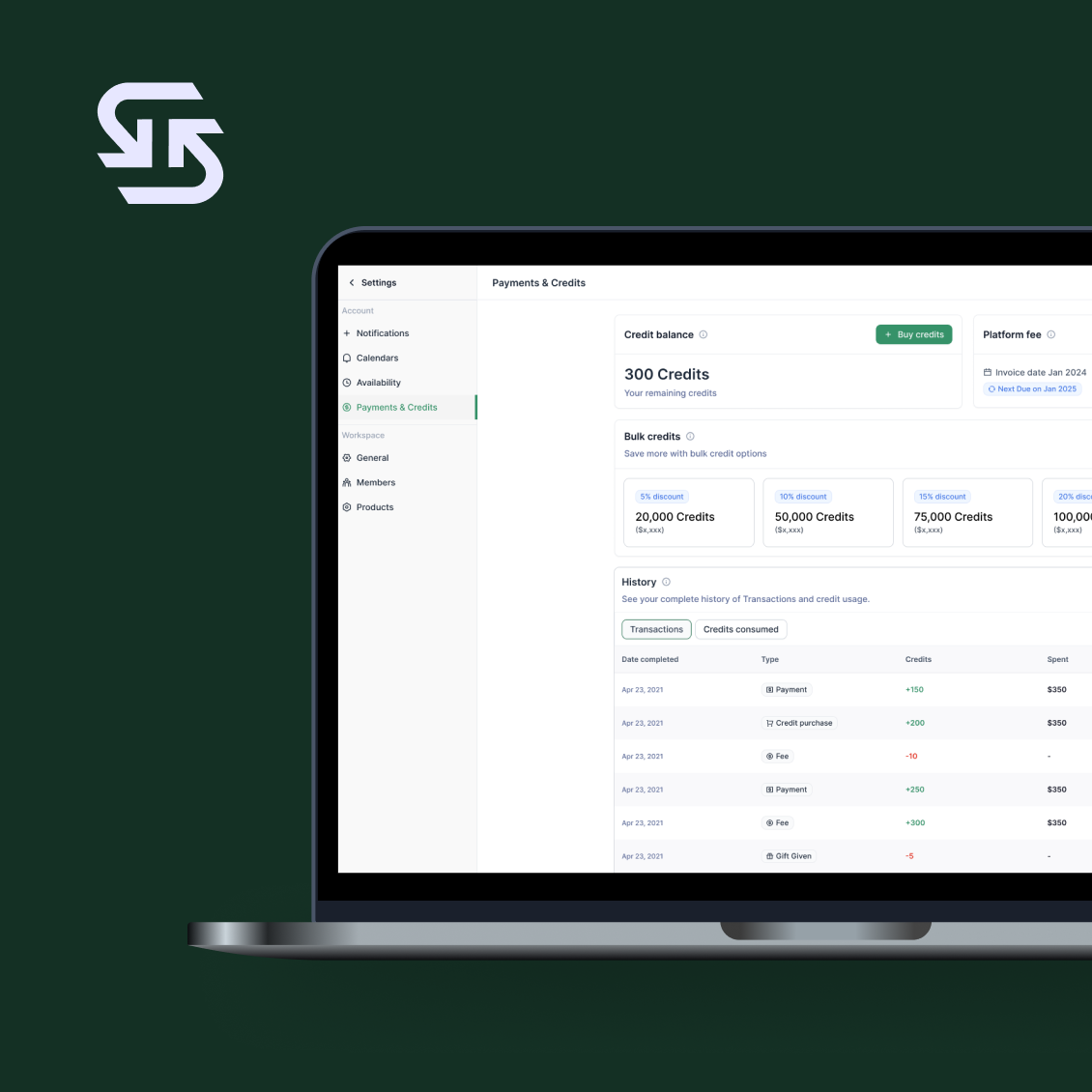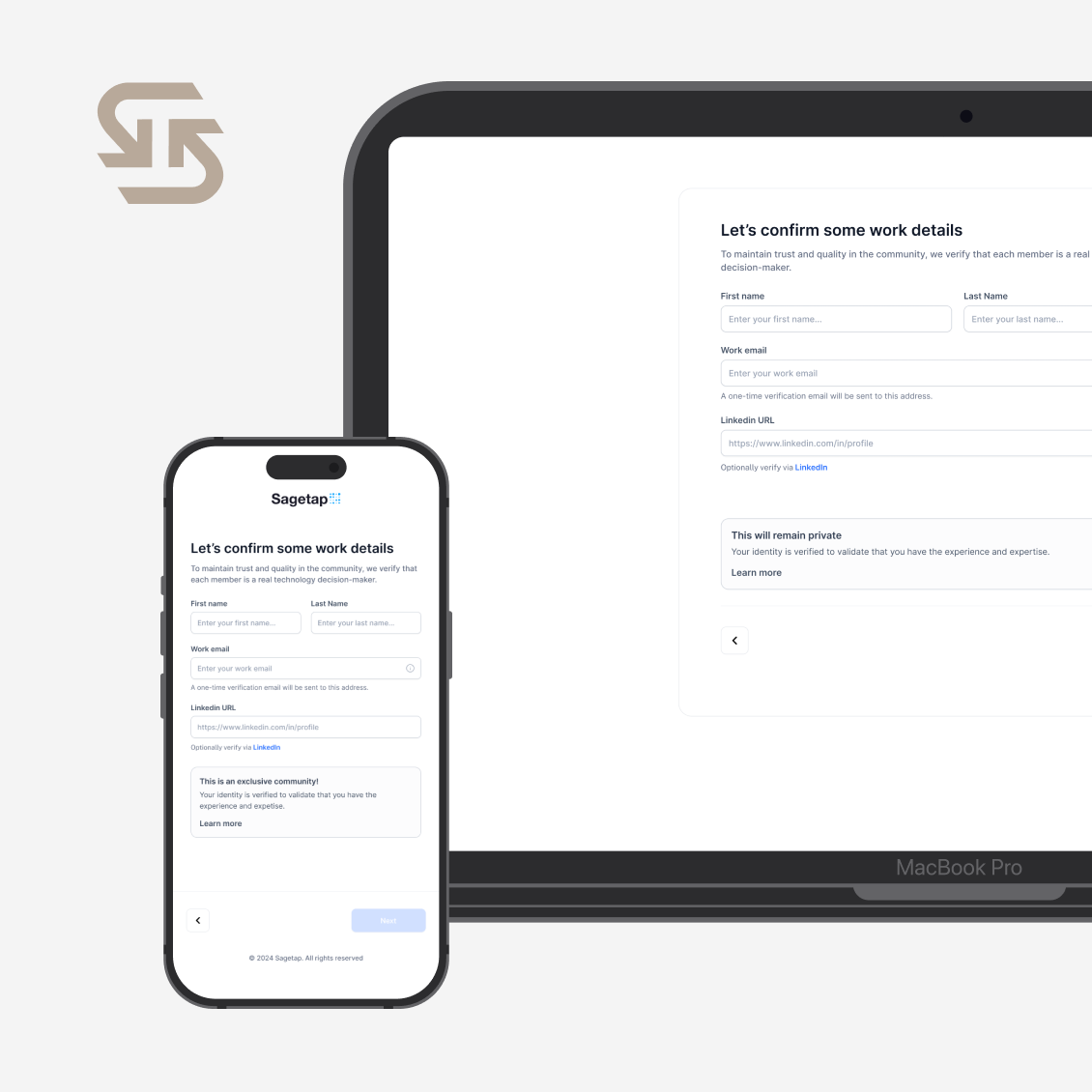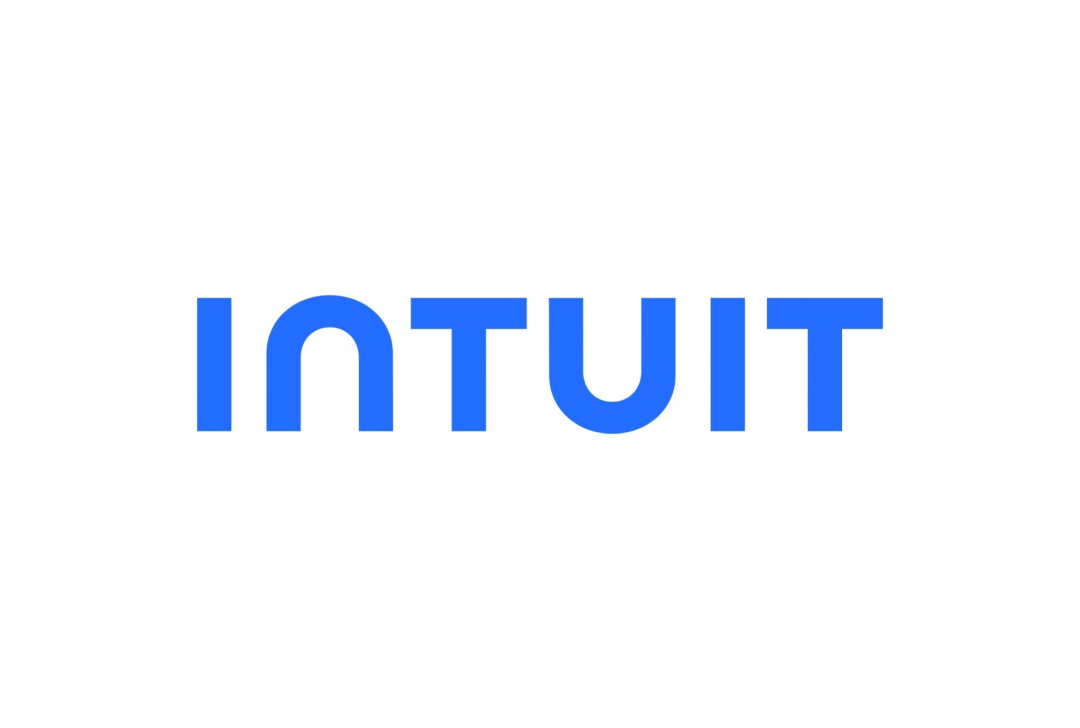Context
The existing onboarding flow treated all users uniformly, overlooking the distinct motivations of exploratory learners and project-driven professionals. This lack of personalization led to uncertainty and drop-offs early in the process, reducing engagement and delaying value realization.
Objectives
- Enable users to self-identify their primary motivation for using the platform
- Create personalized onboarding paths that align with user intent
- Increase profile completion rates through contextual timing
- Reduce onboarding drop-off and expedite first meaningful actions
- Maintain essential verification while minimizing user friction
Design process
Research and Discovery
To guide design decisions, user interviews were conducted to deeply understand variations in user intent and onboarding experiences. The table below summarizes these insights, contrasting the needs and behaviors of exploratory learners and project-focused users. This valuable analysis shaped the tailored onboarding paths to improve relevance, engagement, and reduce drop-offs.
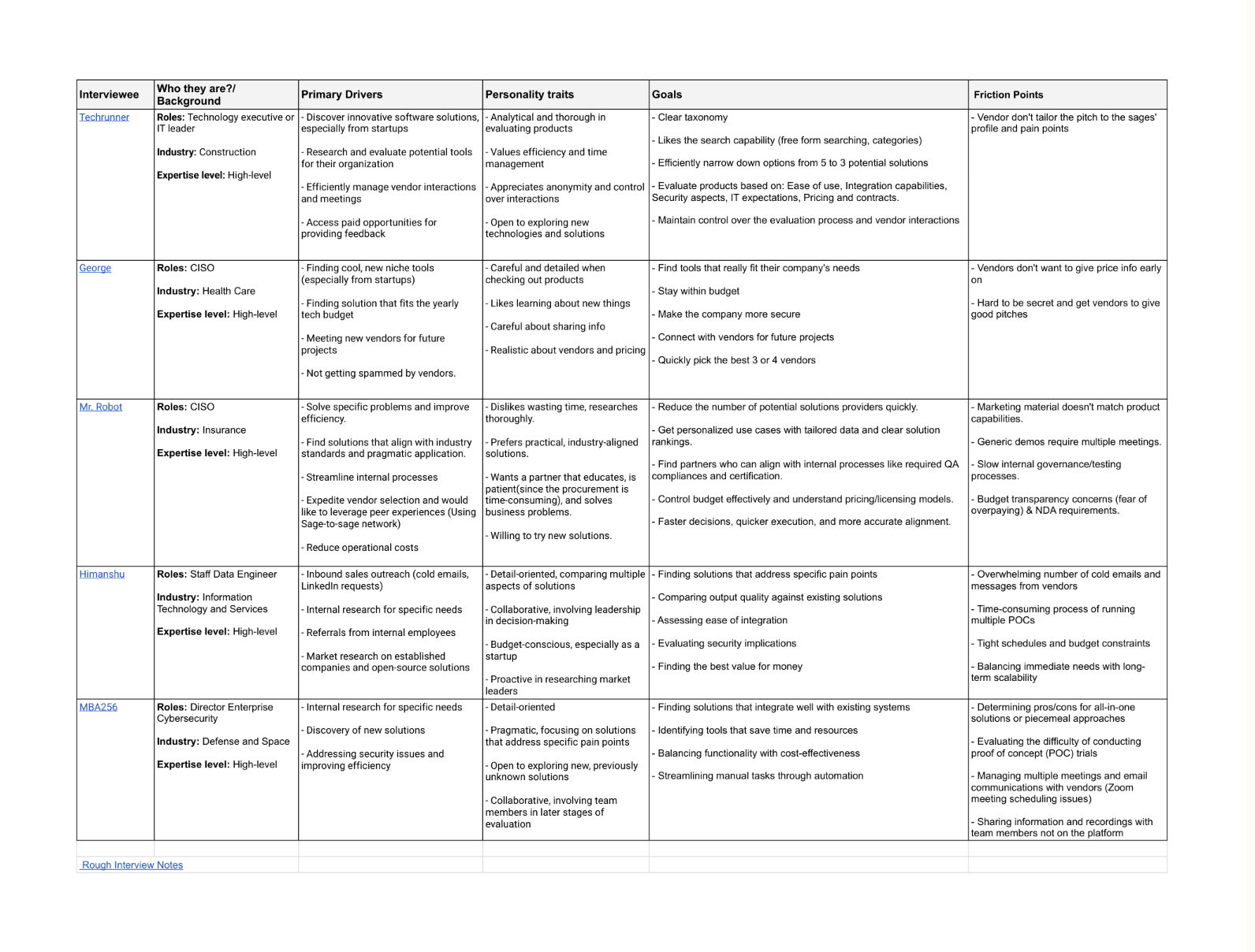
This is a user analysis of actula customer interviews comducted to understamd user behanvior.
User feedback and data showed that users often felt uncertain about how to proceed during onboarding, leading to drop-offs after profile info or skippable steps. Exploratory and project-oriented users had divergent expectations, making distinct onboarding paths critical to delivering early value.
Success metrics defined for the redesign included reducing onboarding drop-offs, increasing profile completeness, improving engagement with recommended content, and accelerating time-to-value via first meaningful platform actions.
I proposed a bifurcated onboarding approach allowing users to choose their primary path upfront:
Choose Your Path:
- Learn & Explore: For users interested in browsing solutions and industry insights.Steps include selecting technology categories of interest, viewing curated paid opportunities, and encouraging an early application submission to drive engagement, followed by completing profile details.
- Have a Project?: For users with active projects seeking tailored recommendations.Steps include selecting relevant technology categories, sharing detailed project info (timeline, objective, replacement vs. new), selecting unpaid product/service suggestions, and completing the profile.
Both flows conclude with verifying the user’s work email to ensure authenticity and enable personalized follow-up.
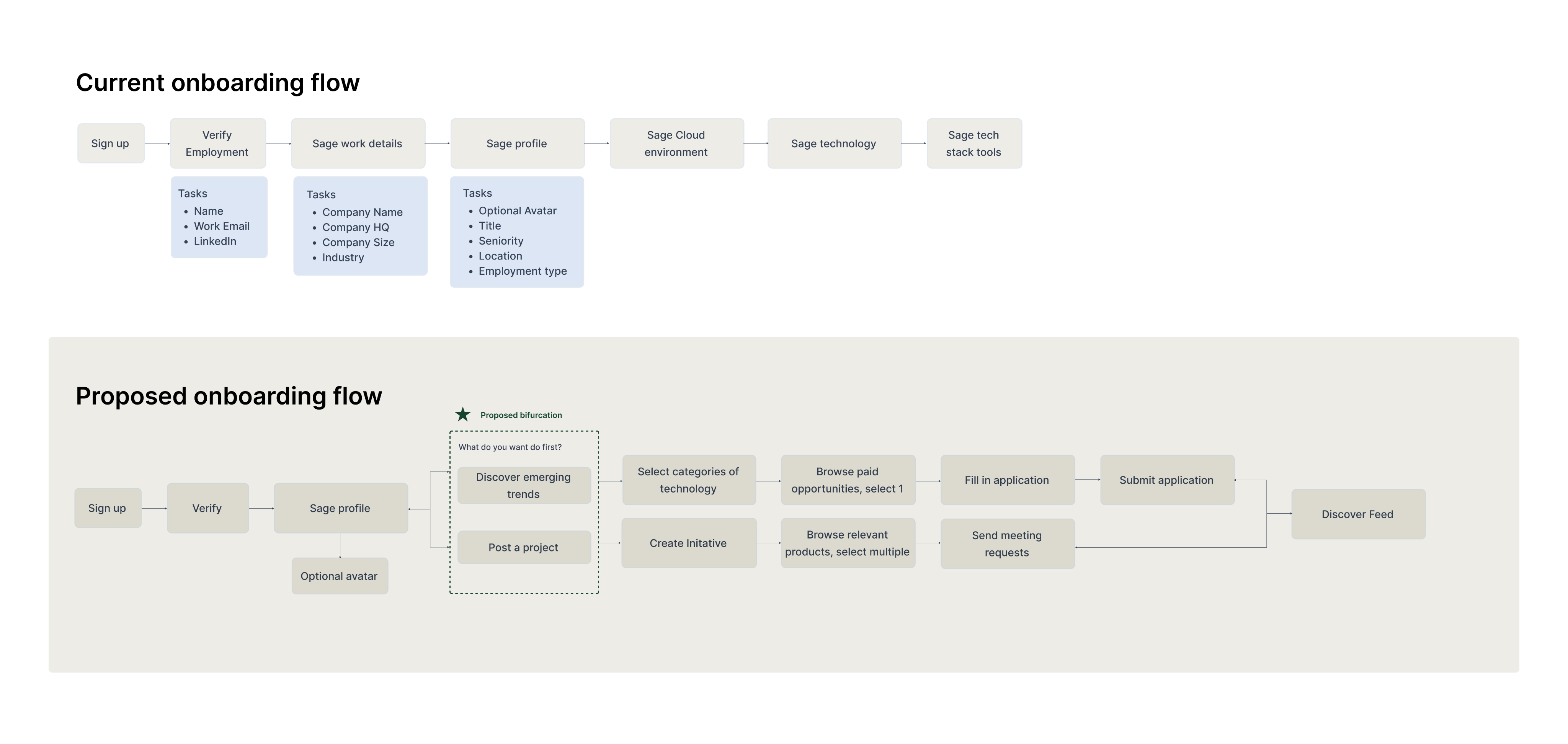
Flow diagrams and wireframes were created to illustrate these options, focusing on clarity, user choice, and early calls to action.
Challenges and Solutions
A major challenge was balancing personalization with minimizing onboarding length to avoid user fatigue. Adding the choice upfront increased complexity but reframing steps as purposeful choices aligned with user goals sufficiently justified interactions, enhancing motivation.
The timing of profile completion was carefully considered; placing it after initial engagement encouraged users to remain invested before entering more detailed information. Moving the email verification to the end preserved flow continuity.
Iterative feedback from stakeholders and test users refined messaging and sequence to maximize clarity and motivation.
Outcome and Impact
The new goal-centric onboarding workflow is designed to:
- Enhance motivation and engagement by addressing individual user needs early
- Improve the quality and timing of profile data collection
- Increase first meaningful actions such as applications submitted or project details shared
Flow diagrams and wireframes were created to illustrate these options, focusing on clarity, user choice, and early calls to action.
By clearly delineating paths and dynamically tailoring steps, the onboarding experience becomes a journey aligned to user aspirations instead of a uniform checklist. Success will be measured post-launch through analytics on conversion rates, drop-offs, profile completeness, and engagement metrics.
Flow diagrams and wireframes were created to illustrate these options, focusing on clarity, user choice, and early calls to action.
Responsive Mobile Design
As part of the onboarding redesign, I created responsive mobile layouts to ensure a seamless experience across devices. Key onboarding flows—including personalized path selection, profile completion, and goal-centric engagement prompts—were optimized for mobile usability and accessibility. This approach maintained clarity, reduced friction, and supported users whether on desktop or mobile, enhancing the overall reach and effectiveness of the onboarding journey.
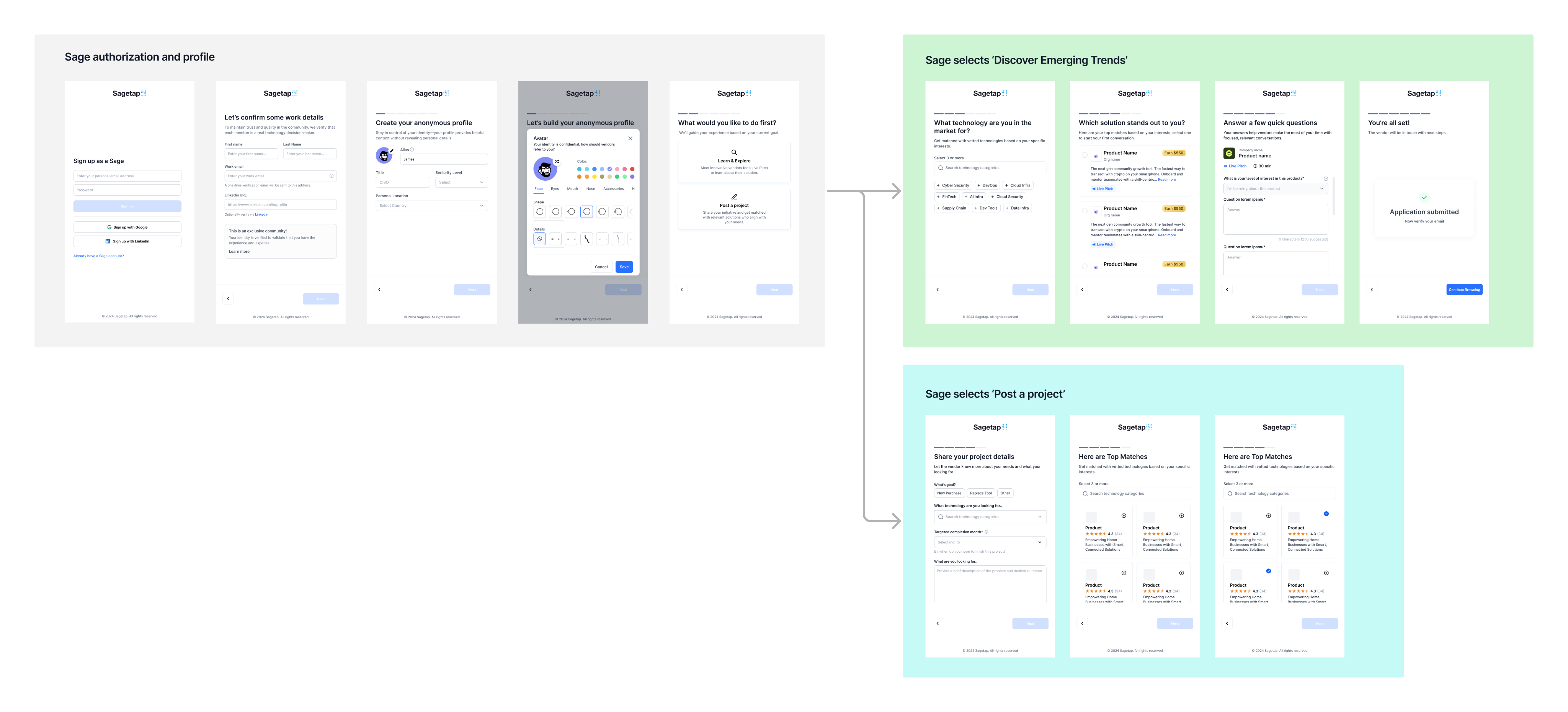
Mobile responsive designs and work flows
Mobile design and workflow prototypes.
Finalizing Design & Implementation
This redesign marked a shift from a uniform onboarding process to a personalized user experience. By empowering users to “Choose Your Path,” the platform offers a more relevant and inspiring introduction that deepens early engagement and accelerates value realization. This project reinforced the importance of understanding user intent and designing flexible yet focused flows to support diverse user journeys in product design.
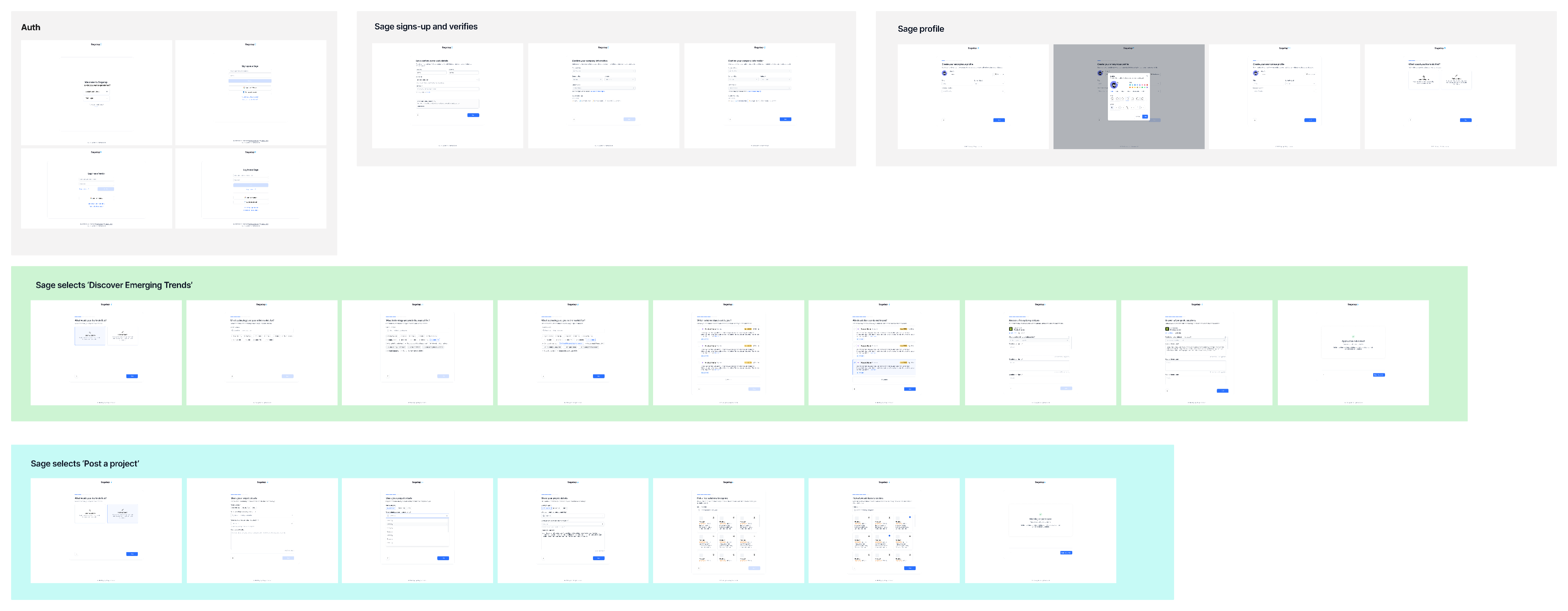
These shows the different aspects of the onboarding work flow.
This project demonstrates a user-focused, intent-driven redesign that empowers distinct user journeys, elevates engagement, and delivers accelerated platform value through personalized onboarding.
Key Learnings
- User segmentation and intent discovery sharply increase early product engagement and reduce drop-offs.
- Making onboarding actionable and personalized shortens time to value and supports habit formation on the platform.
- Iterative prototyping and ongoing feedback are critical to balancing streamlined experience with personalization benefits.
- Clear upfront path selection gives users a sense of autonomy and relevance, which sustains motivation.
Results
- Onboarding drop-off rates decreased significantly post-launch (tracked over first 3 months).
- Profile completion and activation rates increased, driven by timely prompts and goal-centric flows.
- Users reached their first meaningful engagement (application submission or project input) faster, reducing time-to-value.
- Engagement with onboarding content and follow-up pathways improved noticeably, tracked through analytics dashboards.
